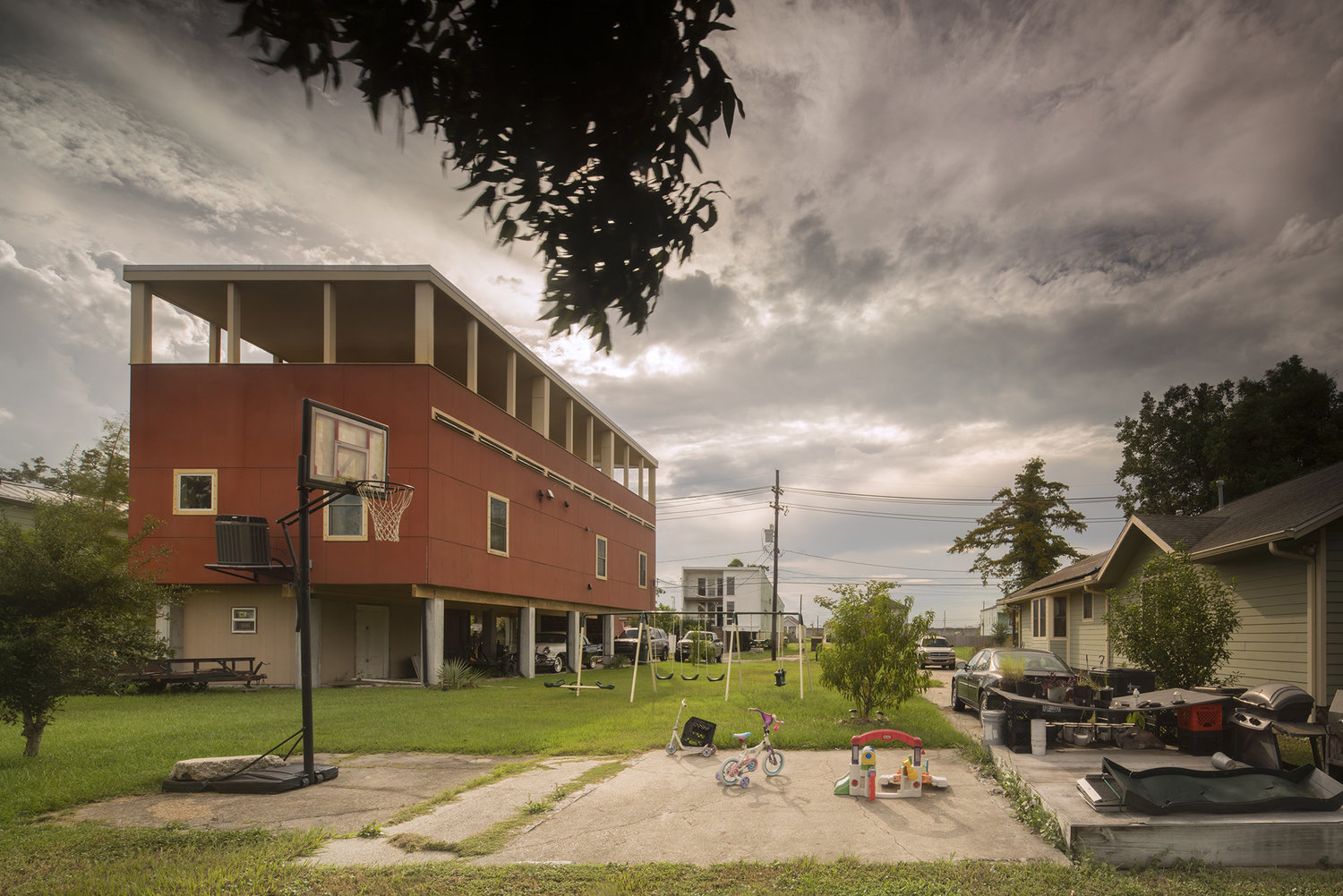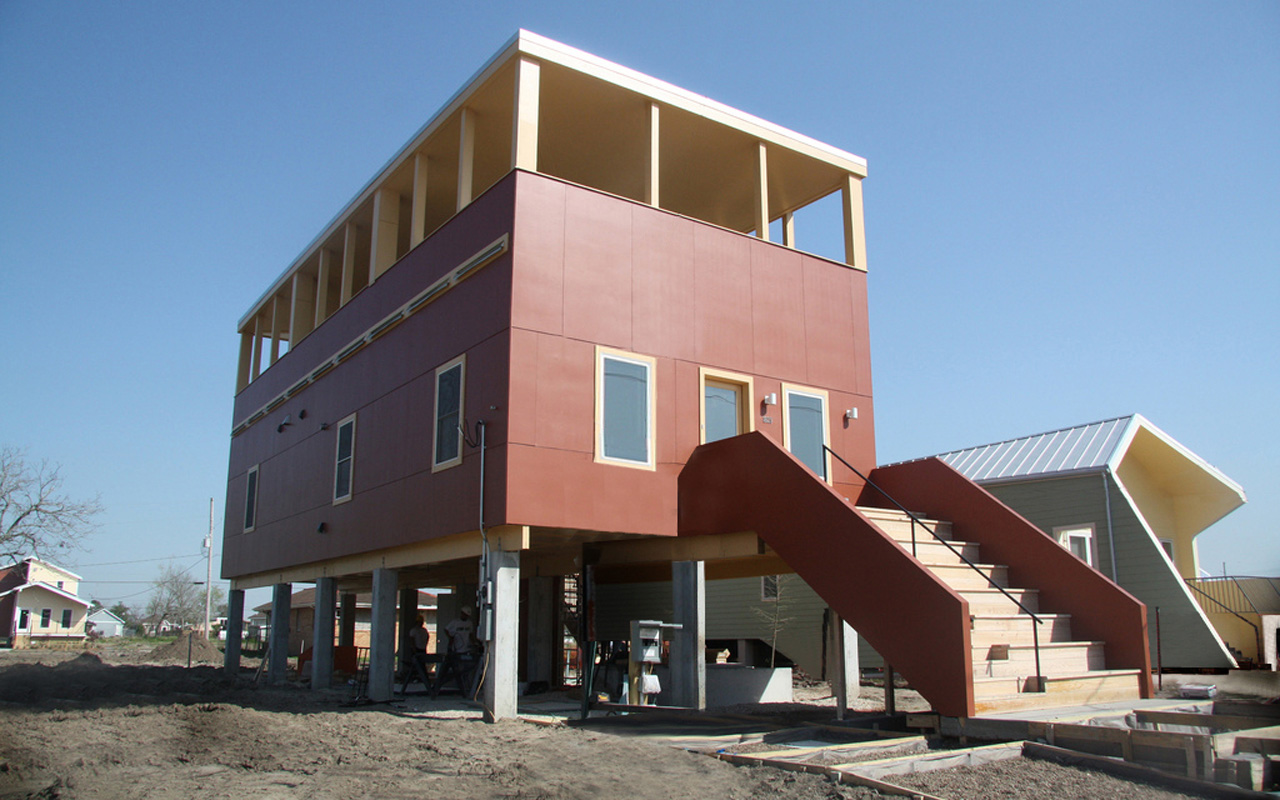13 years ago this month, Hurricane Katrina devastated New Orleans. During the years following the levee failures, the city witnessed a boom in architectural experimentation, as small, independent developers joined the recovery efforts. A leader in this effort was Make It Right (MIR), a charitable organization founded by actor Brad Pitt in 2007. The organization challenged architects from across the world to re-imagine traditional New Orleans housing styles and come up with an affordable, sustainable residential design. Aiming to stimulate redevelopment of the Lower 9th Ward, Make It Right has now built over 100 homes in the region.
The architects for these developments had to balance the need to design for floodwaters with a desire to preserve the character of the New Orleans streetscape. As MIR stated, “We work with renowned architects from around the world to create beautiful, healthy homes. Before we begin building, we spend, on average, a year working with architects and communities in ‘design charrettes’ — meetings geared toward understanding what local families need and how the architect’s design will meet those needs.”
In many blocks of the Lower Ninth, MIR was the only active builder. As a neighborhood of low- and moderate-income homeowners, the area had many residents that required special financing. The foundation sought to ensure that homeowners don’t have to pay a mortgage above what their incomes can bear, with a construction budget at $150,000 per home. Exploring some of the most notable MIR designs, the following homes were created by a range of architects, builders and manufactures. Read on to find out more about how these designs were brought to life.
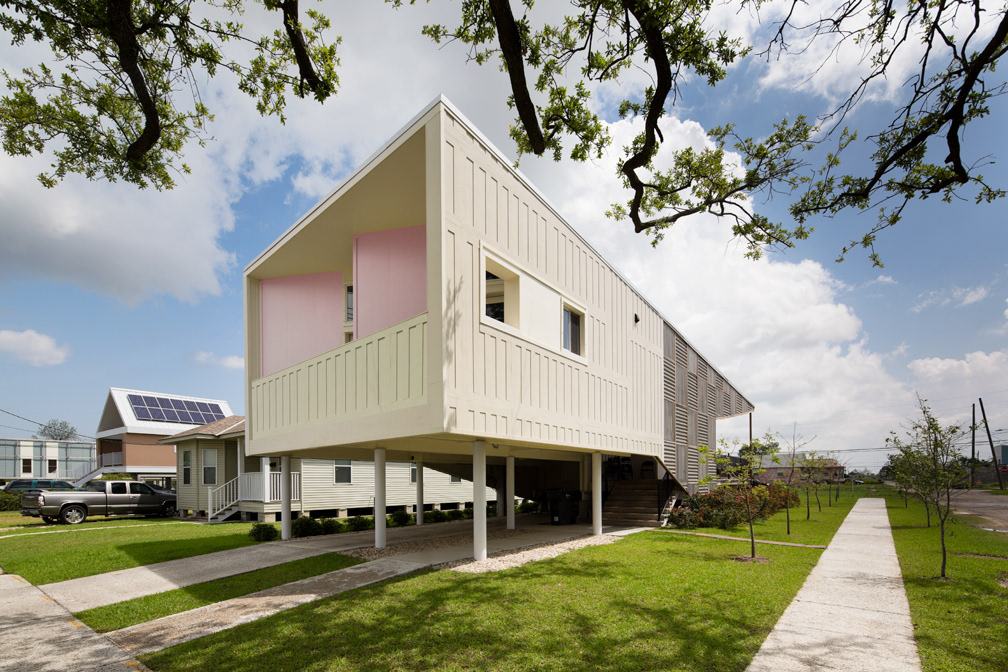
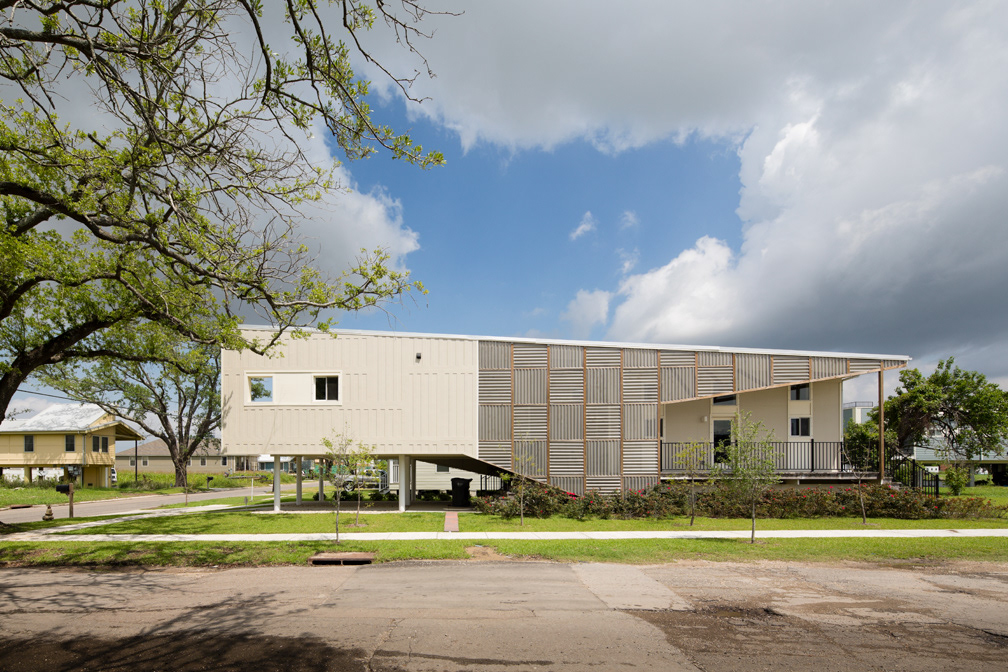 Make It Right House by Brooks + Scarpa
Make It Right House by Brooks + Scarpa
Housewrap by DuPont
Brooks + Scarpa’s MIR home aimed to redefine flexibility in a modern residence. Designed to breaks the prescriptive mold of the traditional home, the project was created with public and private “zones” where private space is deemphasized in favor of large public living areas. The house moves residents away from an isolated layout to more interactive and family-oriented spaces.
The home’s signature façade draws inspiration from traditional American patchwork quilting. Looking specifically at Gee’s Bend quilt-makers of southwest Alabama, the pattern was made using recycled wooden pallets. Working with local manufacturers, the project aimed to ensure construction viability with a textured, rough-hewn aesthetic. Combined with perforated cement board on the east and west façades, the wrapping interweaves shade and privacy while controlling views and daylight.

 Special NO 9 House by Kieran Timberlake
Special NO 9 House by Kieran Timberlake
SIPS by C&G Construction
KieranTimberlake set out to create a sustainable home within the landscape of the Lower Ninth Ward. Affordable and environmentally sensitive, the Special NO 9 House is one of the original 13 single-family homes designed for residents of the neighborhood whose homes were destroyed in Hurricane Katrina. Addressing federal flood standards, the project was created in collaboration with residents and community leaders. The home accommodates a range of adaptations to the interior program, environmental systems and aesthetics.
Special NO 9 House was constructed on site using prefabricated interior partitions and structurally insulated panels. The structure outperforms the typical American home in energy and health through its insulation, non-toxic materials and efficient systems. The performative design of the building envelope combines with careful orientation and large operable windows. Offering natural light, ventilation and views, the open plan aims to foster connections to the neighborhood and surrounding context.
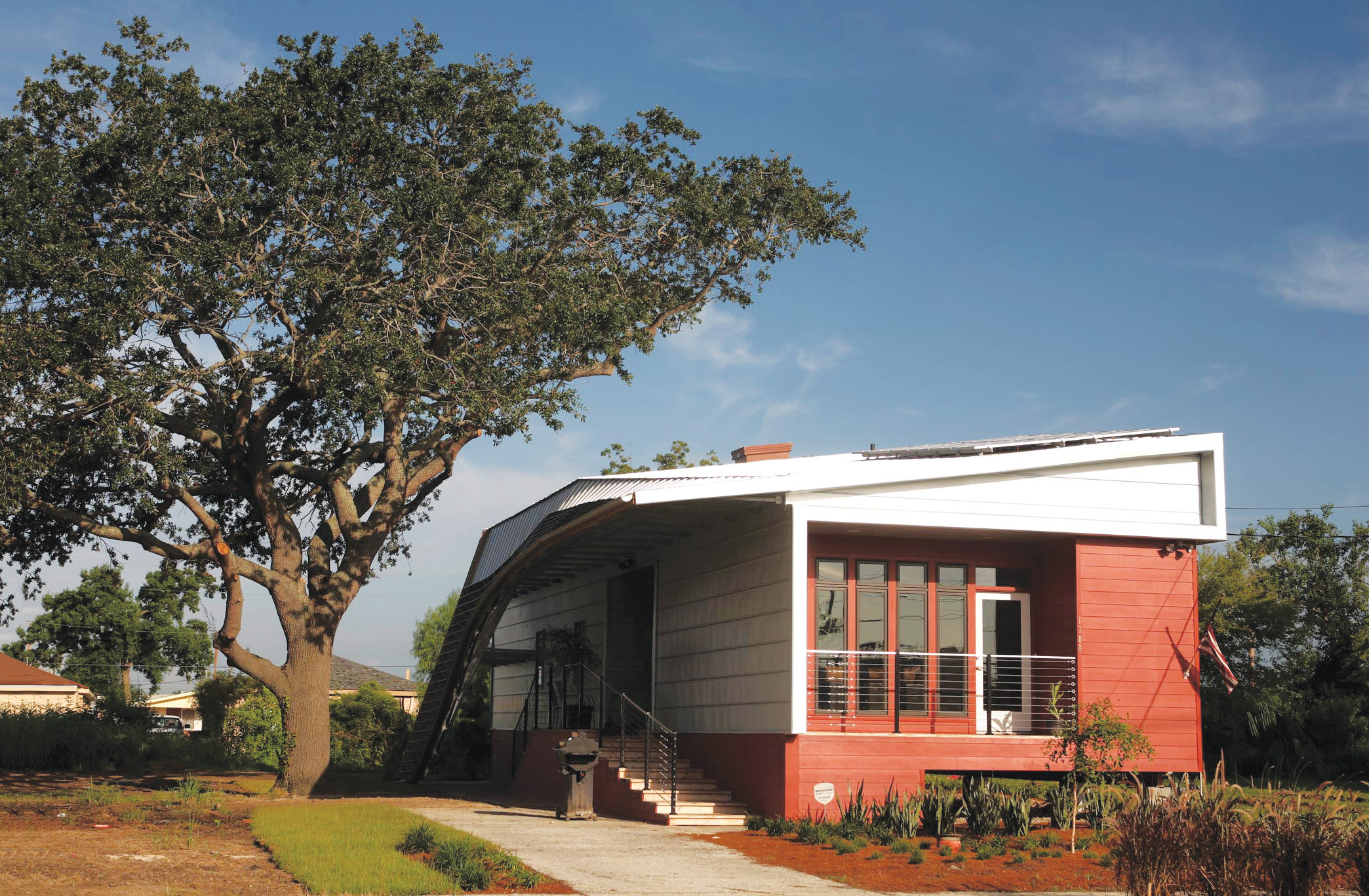
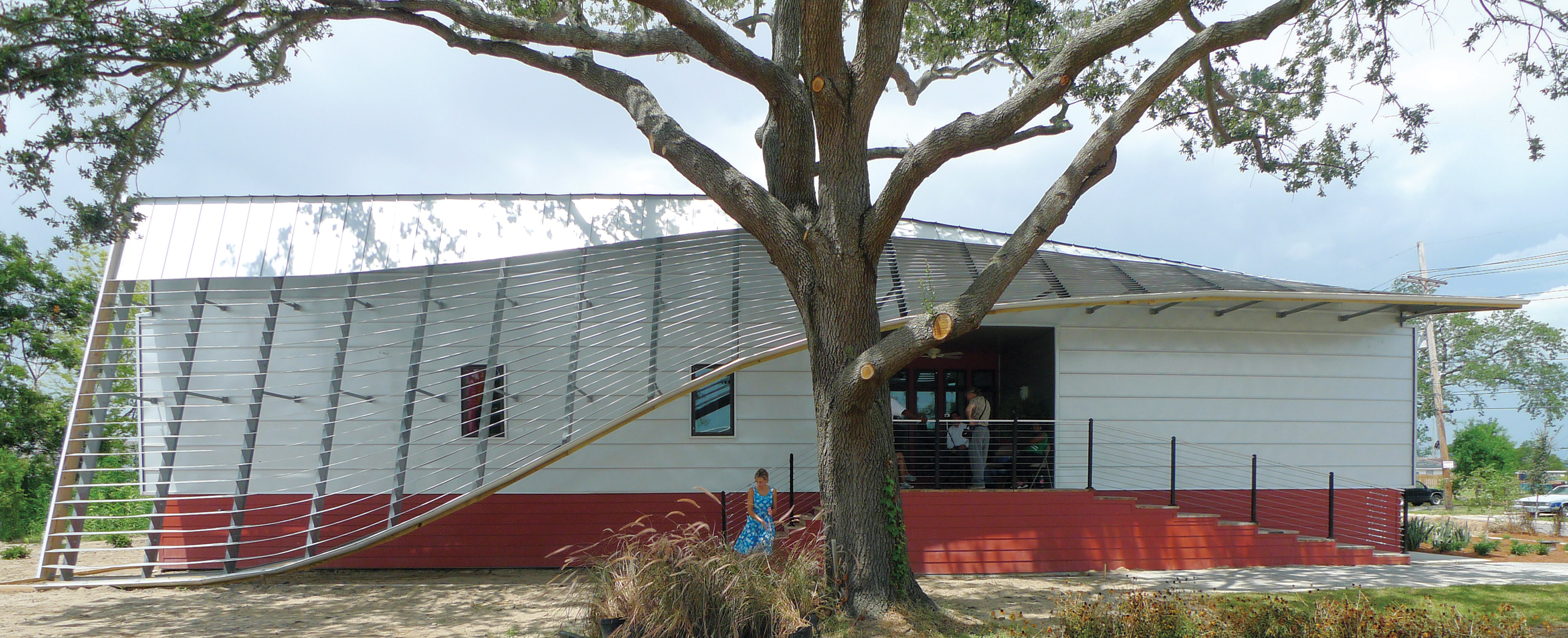 Make It Right House by Trahan Architects
Make It Right House by Trahan Architects
AstroGuard by Hurricane Fabric
Reinterpreting the traditional shotgun typology, Trahan Architects’ design centers on an iconic roof referencing the pitched vernacular of New Orleans. The roof was designed as a high performance component that promotes energy and water efficiency. The metabolic screen works in tandem with the window system to provide hurricane protection.
The windows include fastenings for Astroguard, a fabric that shortens the lengthy process of boarding up windows with plywood during inclement weather. Comprised of ballistic nylon fabric, the American-made hurricane shutter by Hurricane Fabric is strong, non-porous, lightweight and a lower cost alternative to traditional shutters. Answering Make It Right’s Cradle to Cradle call to action, Trahan’s design is a secure solution that focuses on safe materials and low utility consumption.
Structure by GL&SS
Adjaye Associates designed Asem-pa (‘good news’ in the Ghanaian dialect Twi) as an affordable housing solution for New Orleans. As one of five international firms approached to submit a concept, Adjaye worked directly with homeowners. The concept aimed to preserve the area’s local identity and cultural influences. The home possesses a distinct aesthetic, featuring an upper story deck and inverted roof to channel rainwater to a collection system.
Adjaye Associates worked with Glass Light and Special Structures Limited to create the supporting structure. As many of the Lower Ninth Ward residents had previously been trapped in their attics, MIR mandated rooftop access for all the homes. Exploring the best method of construction for the roof, the team looked at tensile and stick-framed systems before ultimately deciding on a panelized approach.


 The FLOAT House by Morphosis Architects
The FLOAT House by Morphosis Architects
SIPS by Premier SIPs
The FLOAT House was made to survive floodwaters and sustain its own water and power needs. Designed by Morphosis in collaboration withUCLA’s Department of Architecture and Urban Design, the house was manufactured cheaply enough to function as low-income housing. In case of a flood, the base of the house acts as a raft, allowing the home to rise on guide posts up to 12 feet as water levels rise. Respecting local culture and climate, the structure is a new approach to prefabricated homes that optimizes production efficiency and allows flexibility in response to the context of New Orleans.
Reinterpreting the iconic shotgun house, the design sits atop a chassis that integrates plumbing, mechanical, electrical and sustainable systems. The design’s polystyrene foam chassis was coated in glass fiber–reinforced concrete. Inspired by GM’s skateboard chassis that supports several car body types, the FLOAT House was designed to support a variety of customizable house configurations. The barge-like chassis was prefabricated on the University of California Los Angeles’ campus, then trucked across the country to be assembled on site.

